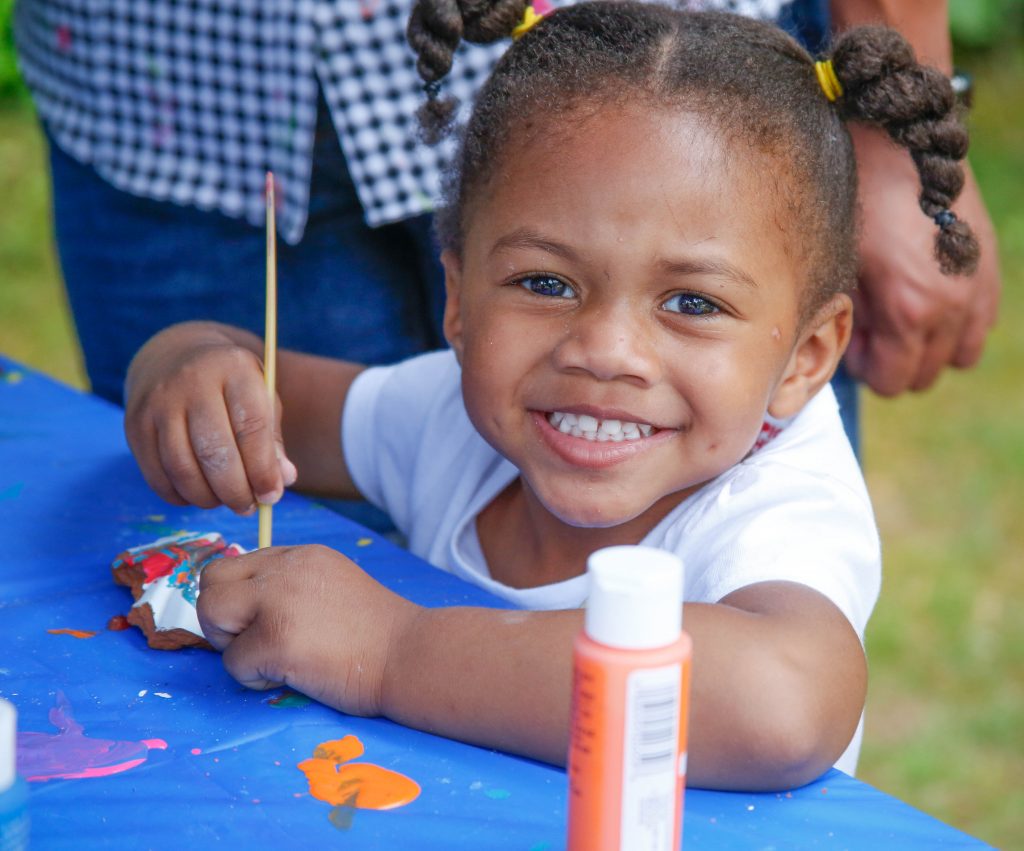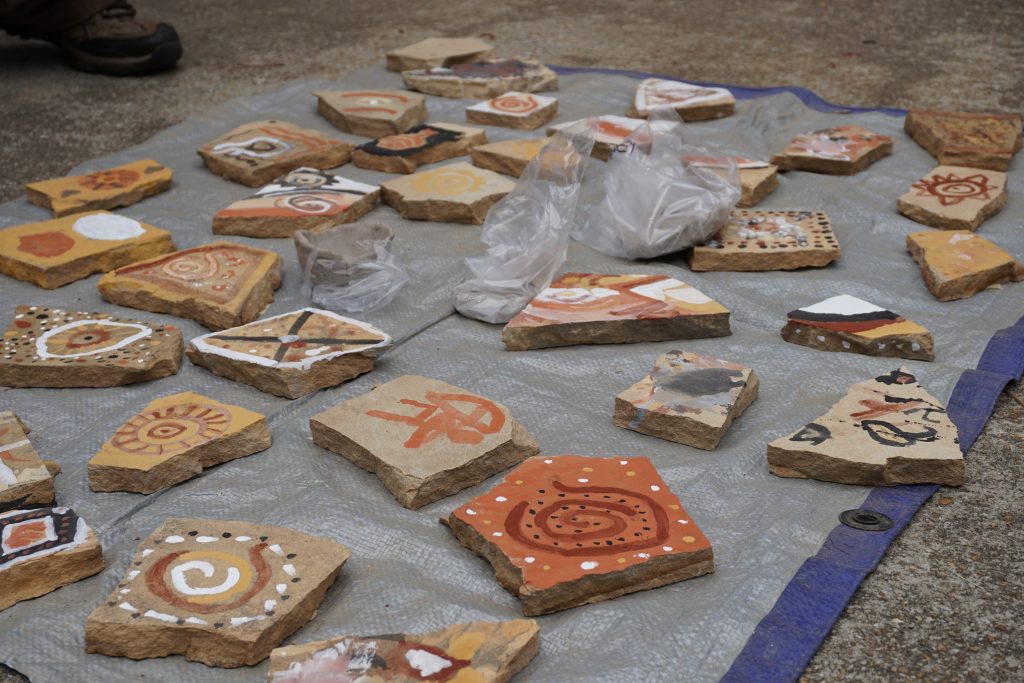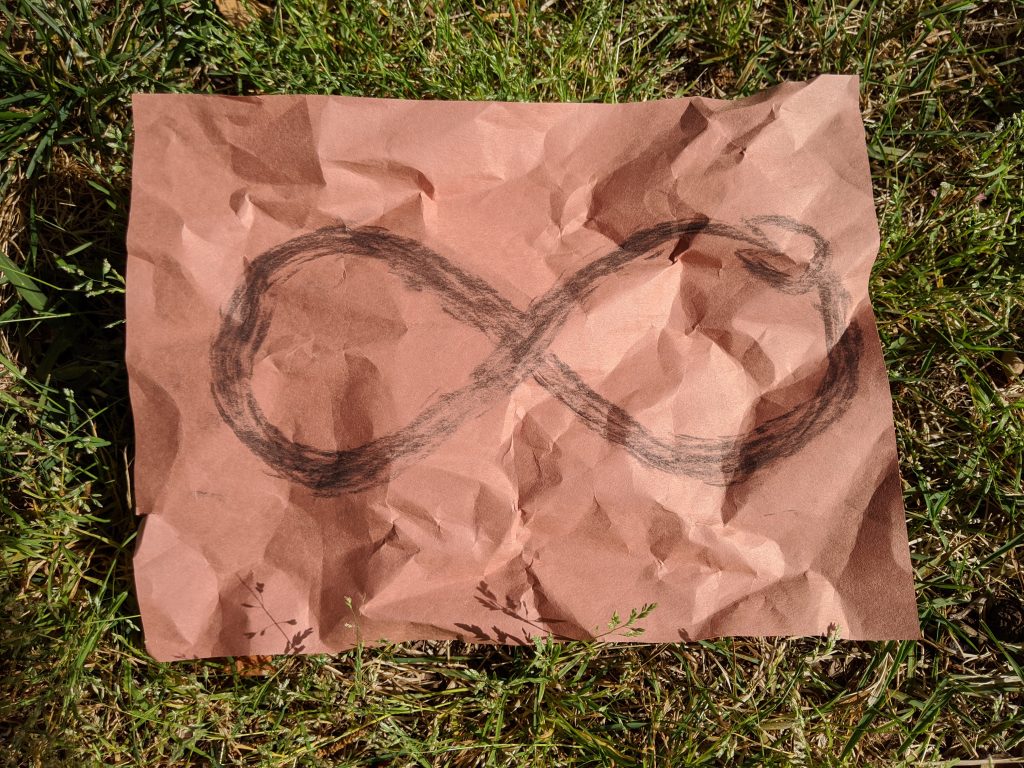
Rock art is one of the oldest forms of human expression. People have been drawing and carving on mountainsides, cliff faces, and caves for at least 28,000 years and they still do today. Rock art that is painted on stone is called a pictograph. A petroglyph is a stone carving. Rock art can be symbolic in nature, a means of record keeping, a method of storytelling, or it can be a sign that says, “Hey, I was here!”
Archaeologists analyze pictographs and petroglyphs to make inferences about the beliefs, experiences, and religion of past peoples. If you made rock art, what would you want it to convey to people in the future?

Want to learn more about rock art? Check out this Article on Petroglyphs, Pictographs, Vandalism and Graffiti by Geologist Dr. Hobart M. King.
Interested in visiting local rock art sites? Take a hike! Stone Mountain’s walk-up trail has over 600 historic petroglyphs that date from the 1860s to present. You can explore them digitally at the Stone Mountain Petroglyphs Path map.
An example of petroglyphs in Georgia is the Track Rock Gap site near Brasstown, Georgia. For more information, visit the Track Rock Gap Petroglyph Site USDA Forest Service web page. Track Rock Gap’s petroglyphs were gouged and vandalized with paint in 2020. The site is temporarily closed while the Forest Service assesses the damage.
But what about pictographs? Painted Bluff in Marshall County, Alabama is a great example of a prehistoric pictograph site that dates from around AD 1400. Painted Bluff was vandalized with graffiti but the Tennessee Valley Authority (TVA) found a way to remove it and preserve the prehistoric pictographs. To learn about the TVA’s work at Painted Bluff, visit TVA: Preserving Places of Peril.
Watch the video below to learn even more about Rock Art in Georgia!
Activity:
Make a Pictograph at Home!*
You can make your very own pictograph at home with a couple of common household items (see below). Be sure to visit the links above so that you have the background knowledge to complete this activity.
Materials
- Paper (construction paper, copy paper)
- Drawing Implement (crayons, charcoal, markers)
Instructions

- After viewing examples of pictographs and petroglyphs by visiting the links throughout this exhibit, brainstorm about the type of pictograph you want to create. Imagine that this is the only thing that you will leave behind for people in the future to find.
- After you have visualized your pictograph, you are ready to create! Draw your pictograph on the paper.
- Crumple up the paper, then smooth it back out. Now your paper should resemble a rock face.
*Adapted from the Ancient Graffiti activity in Florida Public Archaeology Network’s Beyond Artifacts: Teaching Archaeology in the Classroom
Exhibit Reflection Prompts
- Describe the two types of rock art and provide examples from the exhibit links.
- Why do you think the custom of making rock art has been practiced for thousands of years?
- What types of inferences can we make about past peoples by analyzing rock art?
- Do you think that rock art created hundreds or thousands of years ago can influence people today? Explain how Native American art can contribute to modern American culture.
- Examine historic and prehistoric rock art by visiting the links provided throughout this exhibit to compare them. Can you find common themes in the historic and prehistoric rock art? How are they different? Do you think those differences reflect a different time, culture, and place?
- How do your personal experiences and your culture influence how you perceive the pictographs and petroglyphs shown in the exhibit links?
- What does your pictograph say about you? How do you think people 1,000 years in the future will interpret your pictograph?
Standards Connector
| Grade Level | Standard | Description |
| Kindergarten | SSKG1 | Describe the diversity of American culture by explaining the customs and celebrations of various families and communities. |
| Kindergarten | VAK.CN1 | Investigate and discover the personal relationships of artists to community, culture, and the world through making and studying art. b. Recognize the unique contributions of contemporary and/or historical artists and art forms, including Georgia artists. c. Discuss art from a variety of eras and world cultures. |
| Second | SS2H2 | Describe the Georgia Creek and Cherokee cultures of the past in terms of tools, clothing, homes, ways of making a living, and accomplishments. a. Compare and contrast the Georgia Creek and Cherokee cultures of the past to those of Georgians today. |
| Third | SS3H1 | Describe early American Indian cultures and their development in North America. c. Discuss how American Indians continue to contribute to American life (e.g., arts, literature). |
| 6-8 | VA6.CR.1 VA7.CR.1 VA8.CR.1 | Visualize and generate ideas for creating works of art. a. Visualize new ideas by using mental and visual imagery. b. Explore essential questions, big ideas, and/or themes in personally relevant ways. c. Incorporate a variety of internal and external sources of inspiration into works of art (e.g. internal inspiration – moods, feelings, self-perception, memory, imagination, fantasy; external inspiration – direct observation, personal experience, events, pop culture, artists and artwork from diverse cultures and periods). |
| 6-8 | VA6.RE.1 VA7.RE.1 VA8.RE.1 | Reflect on the context of personal works of art in relation to community, culture, and the world. a. Identify how the issues of time, place, and culture are reflected in selected works of art. b. Interpret works or art considering themes, ideas, moods, and/or intentions. |
| 9-12 | VAHSPA.CN.1 | Develop personal artistic voice through connecting uses of art within a variety of cultural, historical, and contemporary contexts. a. Discuss the intent of works of art in context to historical events. b. Identify universal themes that appear in works of art throughout various times and cultures. c. Analyze the ways in which personal experiences affect the understanding and appreciation of works of art. d. Investigate the role of art as a visual record keeper |
| 9-12 | VAHSPA.RE.1 | Reflect on the context of personal works of art in relation to community, culture, and the world. a. Consider the influences on works of art from a wide range of contemporary and traditional works through discussion and/or written response. b. Investigate and discuss how the issues of time, place, and/or culture are reflected in works of art. |
These standards of excellence were sourced from the Georgia Department of Education web page at https://www.georgiastandards.org/Georgia-Standards/Pages/default.aspx
